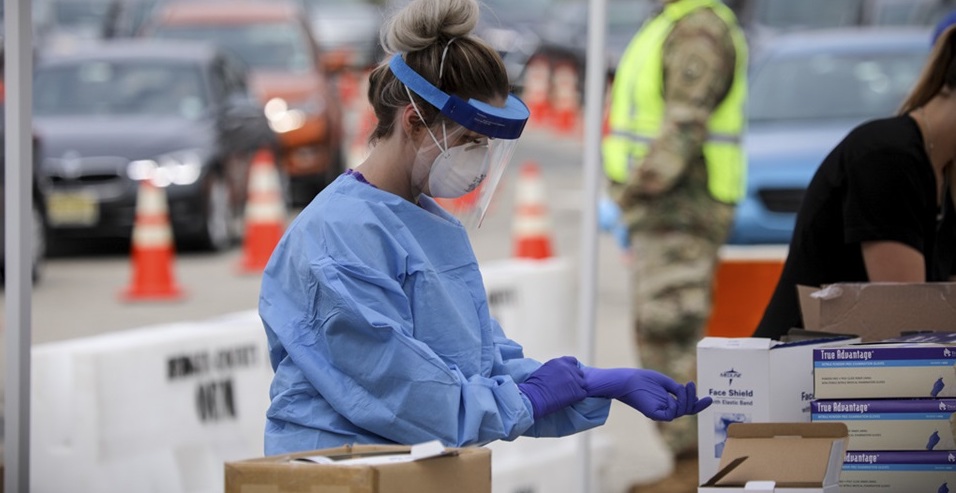In COVID-19, the world faces its biggest global crisis for decades. Gender may not be at the forefront of people’s minds, but it should not be ignored. Pandemics are not gender-neutral and gender-informed responses can improve how infectious disease outbreaks are tackled.
The measures put in place to combat COVID-19 in many parts of the globe are unprecedented. They include the closure of schools, childcare facilities and businesses, travel restrictions, self-isolation, and quarantine in many states. These actions will affect women and men, girls and boys, differently1. Governments should bear these differences in mind in their response strategies, including in public messaging and reporting protocols. This could help to increase resilience and aid recovery from the pandemic.
In a 2019 research report2, we argued that applying a gender lens to biosecurity threats can contribute to States’ preparedness for, and rapid recovery from, biological incidents. Our paper was focused on the gendered impacts of biological weapons – and there is no credible evidence to suggest that COVID-19 is a biological weapon. Nonetheless, as part of the study, we analyzed past Ebola, SARS and other natural disease outbreaks to better understand their gendered impacts. As we grapple with the spread of COVID-19, it’s worth revisiting those research findings.
Understanding how gender norms structure societies can help to uncover different patterns of exposure between men and women, boys and girls. For example, in many parts of the world women operate as the primary caregivers in both domestic settings and professionally, where women make up more than 80 percent of the nursing and midwifery global workforce. This can leave women at greater risk of exposure to pathogens. This was evident during the 2014-2016 Ebola outbreak in West Africa. Women there were in many cases primarily responsible for caring for the sick and performing burial practices. This trend, in part, explains the disproportionate number of female Ebola cases in countries, such as Guinea3 and Liberia4.
Uneven access to information5 can compound gendered differences in patterns of exposure. Research into Ebola suggests that, in some cultures, differences in opportunities for formal education6 were among the causes of the deadly disease’s spread. So was the exclusion of women from meetings7 at which Ebola responses were considered. This can create a situation in which those most at risk of exposure to infectious disease are denied access to critical information on good practices to minimize the risk of infection. Addressing this challenge requires consideration of cultural factors, specifically how to overcome gendered communication barriers to get health messages through to key actors, such as primary caregivers.
Our findings are backed by wider research highlighting gendered patterns of engagement with health care8 across different cultures. Various factors affect health care engagement, such as the distribution of power and resources at different levels of society. The perceived stigma of having a disease is another, under-appreciated factor, and something which is also gendered in certain societies. For example, with Tuberculosis “[e]vidence from South Asia, Africa, and Vietnam suggests that the potential for stigmatization affects women’s help-seeking more than men9 and is linked to fears of contagion and social isolation”. As recent articles on COVID-19 demonstrate, the fear of stigmatization can dissuade people from seeking medical assistance10 and reporting cases of infection. In turn, this can affect monitoring and response strategies. As such, means to counter and minimize stigma need to be considered, particularly through public health messaging.
Disease outbreaks can have serious psychological effects. COVID-19 will be no exception. For example, one study of Ebola reported “profound psychosocial implications at individual, community and international levels11”. Research into the long-term impact of the outbreak of Middle East respiratory syndrome (MERS), which is from the same family of coronaviruses as COVID-19 and SARS, suggested that MERS survivors have a high chance of adverse psychiatric consequences, even after their recovery. Indeed, almost two-thirds of survivors suffered from significant psychiatric problems12, including post-traumatic symptoms, sleep problems, anxiety, and depression. Post-traumatic stress disorder (PTSD) affects women and men, boys and girls – but not necessarily equally. Responding to gendered differences in coping style13, might, therefore, aid societal recovery in the long term.
As countries struggle to address COVID-19, it will be important to develop strategies that consider gender and incorporate the voices of women who are often on the front line of local and national responses. It should become evident that gender analysis is not a luxury, even in an emergency. It can help us ask the right questions and focus on the right issues to reduce the spread of the disease, treat people appropriately, and recover swiftly.
Applying a gender lens to public health emergencies would involve addressing questions, such as:
- What are the different needs and priorities of women and men in the context of the proposed policy?
- What roles do women and men perform in the context of the policy?
- What resources (economic, financial, physical, natural, other assets) and information do women and men have access to?
- Are there existing gender inequalities that may be exacerbated by the proposed policy?
- Do women and men have equal access to and influence over policy development and decision-making?
- Are the services and technologies that the policy provides available and accessible to both women and men?
- Do follow-up protocols address the needs of specific groups (e.g. families with children, persons with disabilities, the elderly)?
- Are systems in place to collect, track and publish relevant sex-disaggregated data and statistics?
Beyond mainstreaming gender in public health systems, governments should also support research on the differentiated impacts of disease among women, men, boys and girls. Thus far, gender perspectives have been largely absent from research on disease outbreaks. For example, a review of over 600 scholarly articles published on the Zika virus epidemic between January 2015 and May 2016 found that only one paper included the term gender among its keywords14. Improving data collection and furthering scientific research on the gendered dimensions of outbreaks will allow us to make women and men’s needs and realities visible and serve as a basis for gender-responsive health policies.
The authors are grateful to Dr. John Borrie and Dr. Renata Dwan for their thoughtful comments and suggestions.



